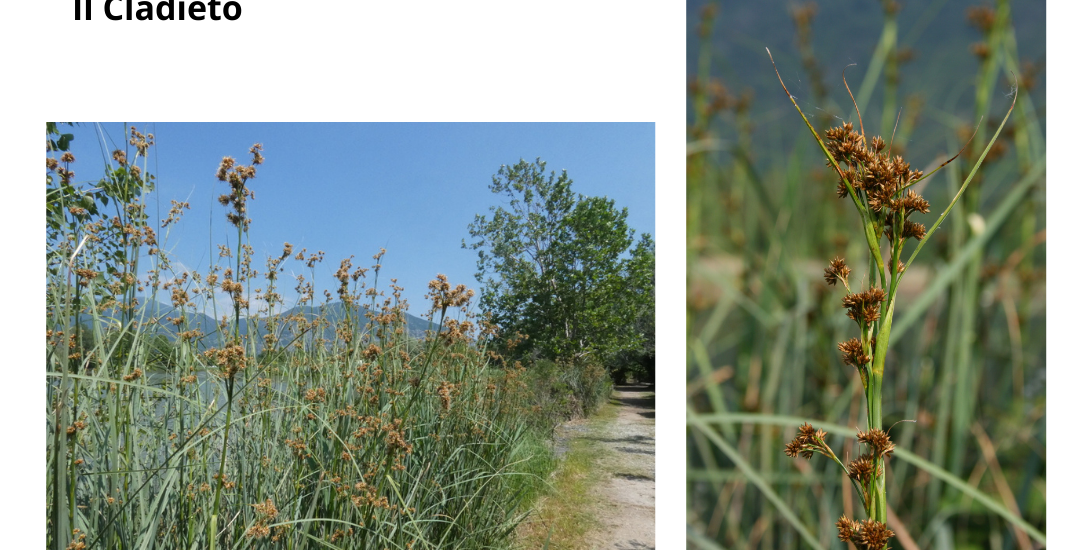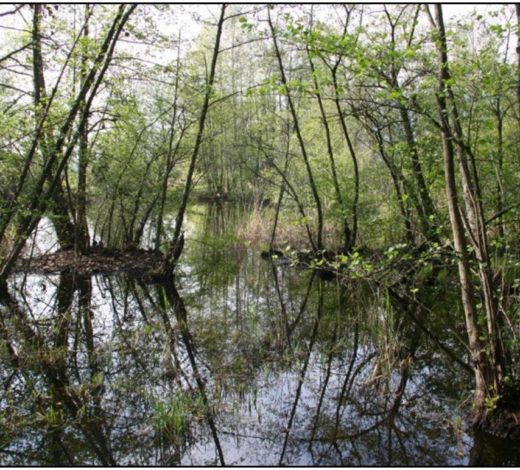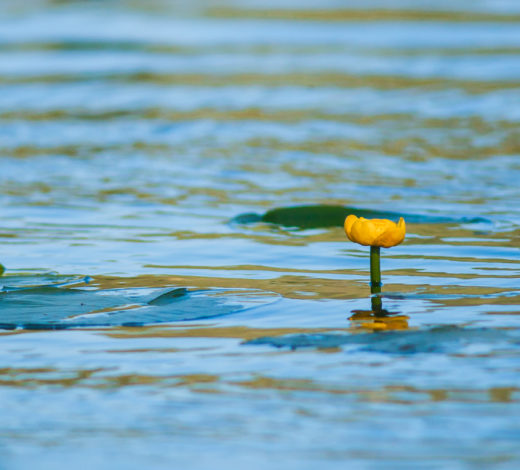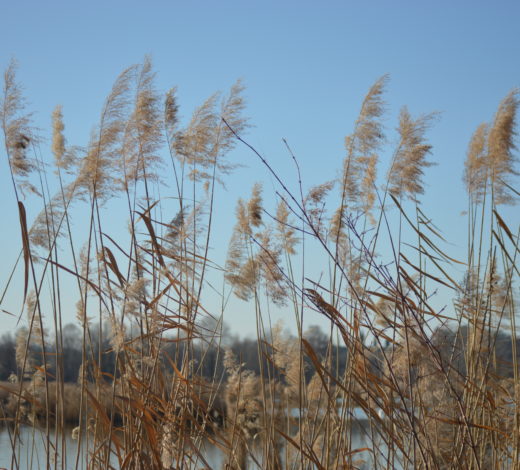The Water’s Edge
The edges of the water, also known as weirs, were once used to transport peat. Today, some of them have paths open to the public, so although they are not a specific habitat, they offer visitors the opportunity to observe various plant species typical of the peat bogs. Grassy plants include horsetail (Equisetum sp.), marsh fern (Thelypteris palustris), yellow iris (Limniris pseudacorus), purple loosestrife (Lythrum salicaria), valerian (Valeriana officinalis), and yellow toadflax (Linaria vulgaris). The banks are rich in shrubs, including the invasive false indigo (Amorpha fruticosa), originally from America, which has largely replaced the native grey willow (Salix cinerea), and brambles (Rubus). A few vines can often be seen among the shrubs, such as honeysuckle, which is present both in its native form (Lonicera caprifolium) and in its exotic form (Lonicera japonica), hops (Humulus lupulus), and the graceful and rarer bittersweet (Solanum dulcamara). It is also possible to see very valuable plants that create true wetland habitats in other parts of the Reserve, such as the ‘cladieto’ and fens.
The ‘Cladieto’
The dominant species, from which this habitat takes its name, is swamp sawgrass (Cladium mariscus), a tall, sharp grass that can easily be seen on the path to the observation tower. It is such a rare species that it is mentioned in the text sanctioning the protection of the Reserve, and it is currently the object habitat restoration, with the planting of new certified seedlings.
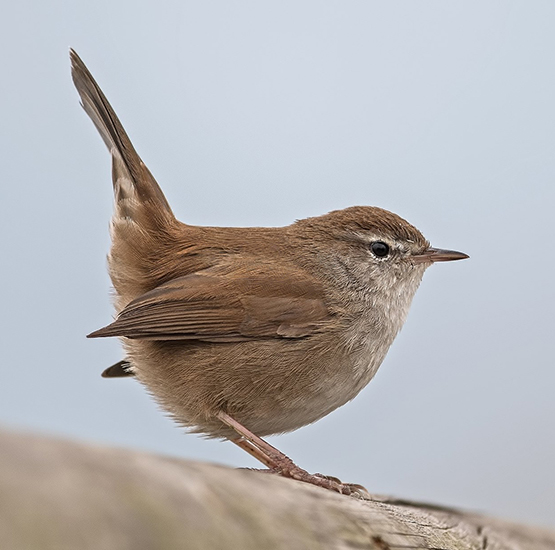
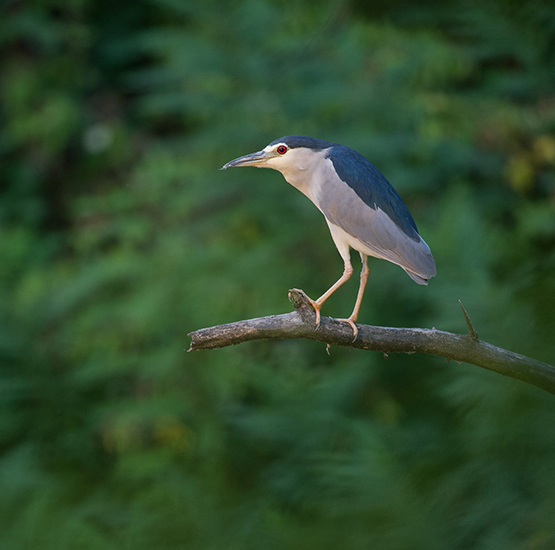
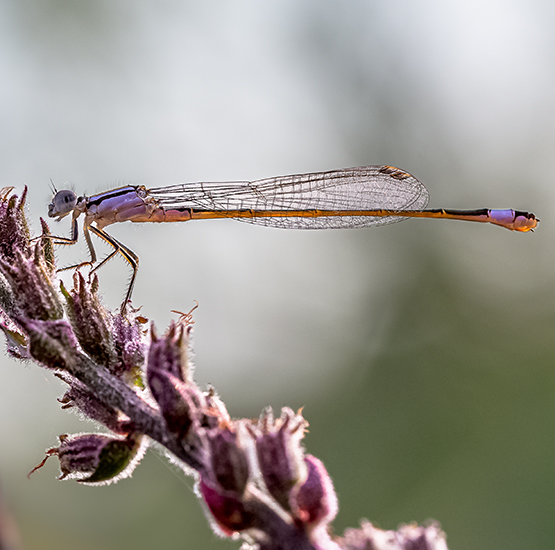
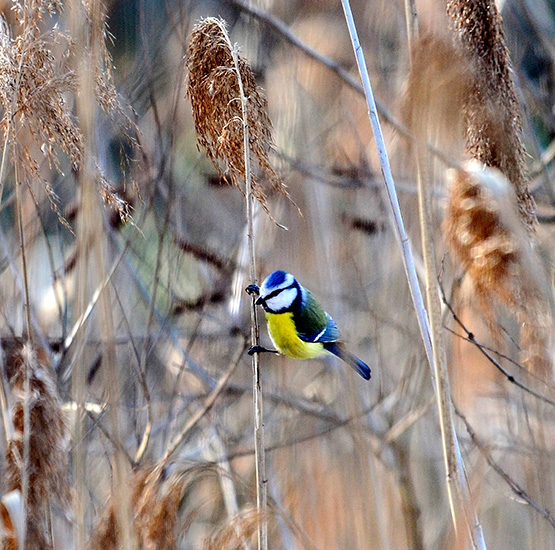
The Fens
Beautiful clumps of Carex acutiformis are also found along the paths in the Reserve. These can be distinguished from normal meadow grass because the base of the long, narrow leaves is triangular. You must be careful, however, because like all marsh grasses, it suffers from trampling, so it is a good idea to remain in the centre of the paths without stepping on the vegetation at the edges to avoid its disappearance in favour of more common meadow species. The sedge endures at the edges of the rush stands but is often overwhelmed by them.
